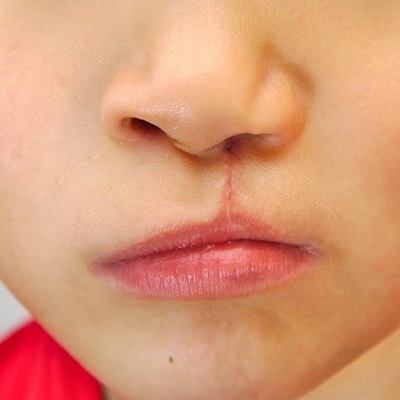
Numerous craniofacial birth abnormalities, such as cleft lip and palate, impact thousands of children globally every year. However, due to cultural misconceptions and the stigma associated with physical birth abnormalities, these disorders are delicate conversation topics. Moreover, facial and oral deformities known as cleft lip and cleft palate develop extremely early in pregnancy. In addition, normally, it arises when the fetus is still developing within the mother. Clefting occurs when insufficient or improper tissue joins in the mouth or lip region. Further, congenital disorders that alter an infant’s facial anatomy, such as cleft lip and palate, provide particular difficulties and call for specialist treatment. This extensive overview explores the facets of cleft lip and palate, including kinds, causes, diagnosis, available treatments, and the necessity for those impacted by these abnormalities to get holistic care.
What is a Cleft Lip?
As we know, the lips form in the fourth and seventh weeks of pregnancy. Body tissue and unique cells from each side of the head grow toward the middle of the face during pregnancy and come together to form the face. The lips and mouth are examples of the face characteristics formed by this merging of tissue. If the lip’s constituent tissue does not fully unite before birth, the result is a cleft lip. The upper lip becomes open as a result. There are two types of lip openings. A tiny slit or a wide aperture that extends from the lip into the nose. Rarely, a cleft lip can develop in the center of the lip or on one or both of the lip’s sides. Children who have a cleft palate may also have a cleft lip.
What Is the Palate Cleft?
The sixth and ninth weeks of pregnancy are when the palate, often known as the roof of the mouth, grows. Furthermore, a cleft palate develops if the tissue that comprises the roof of the mouth does not completely fuse during pregnancy. A newborn’s palate may be open in both the front and back. Some newborns, though, have a slightly open palate.
Causes of Cleft Lip and Palate:
Most newborns with orofacial clefts have unknown reasons. Gene abnormalities can cause cleft lip or palate in certain children. Genetics, environmental exposure, and the mother’s food and drink choices during pregnancy also matter. Moreover, the usage of specific drugs during her pregnancy can cause to development of cleft lip and cleft palate. Hereditary and environmental variables lead to cleft lip and palate during fetal development. In addition, contributing factors include smoking during pregnancy, exposure to certain drugs, maternal nutrition, and genetic predisposition.
Types of Clefts:
The degree of lip involvement and the location of the aperture determine the type of clefts. Some major types include:
- Unilateral Defects: Unilateral cleft lip, incomplete on the left and complete on the right. Affected on one side of the lip, unilateral defects are the most prevalent aperture, which can include or exclude a cleft palate. A cleft palate may coexist with an incomplete unilateral cleft lip and palate, characterized by a lip notch that does not extend into the nose.
- Bilateral Defects: Cleft lip bilaterally deficient on the left and complete on the right. Bilateral defects result in two clefts that affect the lip and palate on both sides. A cleft palate may coexist with an incomplete bilateral cleft lip and palate, characterized by a notching on both sides of the lip that does not extend into the nose.
Children may also have a less obvious type of cleft lip than the ones seen above, called a forme-fruste cleft lip. A little, slight depression of the lip is known as a forme-fruste cleft lip.
Diagnosis:
Because most lip clefts result in actual alterations to the fetus’s face, prenatal ultrasonography is useful for diagnosing these conditions. Because it is difficult to observe during prenatal ultrasounds, only 7% of fetuses with isolated cleft palate (no cleft lip present) have the issue identified.
If not diagnosed in the prenatal ultrasound, a physical check of the mouth, nose, and palate after birth could identify a cleft lip or palate if an ultrasound does not reveal the condition. Your doctor could occasionally advise amniocentesis to look for further genetic disorders. It aids in congenital disease diagnosis in various cases.
Conclusion:
In summary, a thorough understanding of cleft lip and palate encompasses medical problems and a wider range of care considering speech, psychological, and dental issues. A supportive environment and accepting a multidisciplinary approach can help those born with cleft lip and palate overcome obstacles and lead happy, productive lives.
To diagnose cleft lip and palate during pregnancy consult with Dynamic Clinic Islamabad and know about the growth of your baby. In case, your child is diagnosed with cleft lip or palate, Dynamic Clinic will be your best choice for its treatment.









